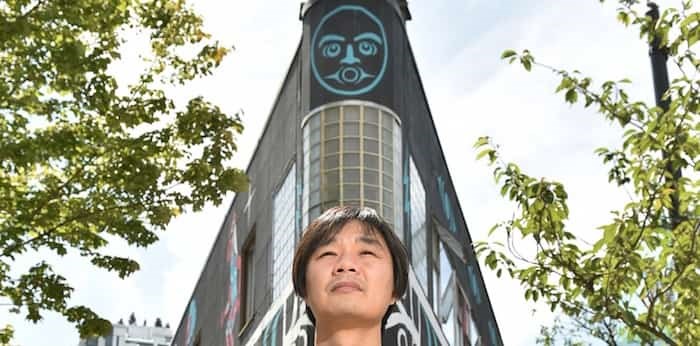 Heritage В鶹ҙ«ГҪУі»ӯSocietyвҖҷs executive director Bill Yuen says Mount PleasantвҖҷs distinct character is at risk, which is why вҖҳThe Heart of Mount PleasantвҖҷ tops the organizationвҖҷs 2019 watch list. Photo Dan Toulgoet
Heritage В鶹ҙ«ГҪУі»ӯSocietyвҖҷs executive director Bill Yuen says Mount PleasantвҖҷs distinct character is at risk, which is why вҖҳThe Heart of Mount PleasantвҖҷ tops the organizationвҖҷs 2019 watch list. Photo Dan Toulgoet
The old Mount Pleasant village at Main Street between Sixth and 12th avenues, combined with the triangle block formed by Main, Broadway and Kingsway, form what Heritage В鶹ҙ«ГҪУі»ӯSociety refers to as вҖңThe Heart of Mount Pleasant,вҖқ which has acted as the вҖңhubвҖқ of the neighbourhood since it began to develop in the 1880s.
Its ongoing value lies in the older buildings, diversity of longtime businesses, affordable artist spaces and the diverse demographics, according to Bill Yuen, the organizationвҖҷs executive director.
Like many, Yuen appreciates the quirky mix of whatвҖҷs offered.
вҖңYou have the book store, which I really enjoy going to вҖ” Pulpfiction books. ItвҖҷs great that people walk in there and they all know the owner or the people working there. ItвҖҷs almost familial,вҖқ he said.
вҖңI quite enjoy the triangle building. ItвҖҷs rather important. Obviously, thereвҖҷs a lot of history in the building, but upstairs thereвҖҷs a lot of artist studios that are affordable for artists. Downstairs, thereвҖҷs GeneвҖҷs [cafГ©], of course, which is quite a beloved space. ItвҖҷs a wonderful corner that people can use. People sit outside вҖ” thereвҖҷs a lot of activity outside. ItвҖҷs quite a wonderful building.вҖқ
What the area will look and feel like in the future remains uncertain, however. That concern, along with its importance to a lot of people, is why Heritage В鶹ҙ«ГҪУі»ӯSociety (HVS) rankedМэМэon its 2019 Top 10 watch list. The list вҖ” the organizationвҖҷs 19th вҖ”Мэ.
2019 TOP 10 WATCH LIST
- The Heart of Mount Pleasant
- Broadway Neighbourhoods
- Maritime Museum
- Dunbar Theatre
- Punjabi Market
- 525 Great Northern Way
- Fairmont Building
- Legacy of Expo 86
- Japantown
- Protecting VancouverвҖҷs Heritage
Uncertainty around how the Broadway Plan, which is underway, will unfold was a key factor in the decision, and also whyМэ position.
вҖңThe heart of Mount Pleasant and the other Broadway Neighbourhoods are key areas that are distinct and beloved,вҖқ the watch list states.
вҖңThe combinations of small local businesses, streetscapes, public gathering spaces, demographics, more affordable spaces and older buildings make them significant for the benefit of the public.вҖқ
But advocates worry about what could be lost if heritage concerns, including the idea of вҖңliving neighbourhoods,вҖқ arenвҖҷt given due consideration during the cityвҖҷs planning processes, Yuen said.
, the Broadway Plan, which will take two years to complete, covers the Broadway corridor from Clark Drive to Vine Street between West First and 16th avenues, traversing four neighbourhoods вҖ” False Creek Flats, Fairview, Mount Pleasant and a corner of Kitsilano. It will address subjects such as housing, job space, and social and cultural amenities aroundМэthe future subway routeМэвҖ” an extension of the Millennium Line from VCC-Clark Station to Arbutus Street. Six stations are planned вҖ” five on Broadway, potentially at Main, Cambie, Oak, Granville and Arbutus. Conservationists fear the stations could intensify development pressure.
The Broadway Plan is not the only large-scale planning program underway that will impact neighbourhoods.МэМэis also in the works. Council directed staff to start developing it last November.
вҖңWeвҖҷre talking about big impacts on neighbourhoods вҖ” on what constitutes a neighbourhood. WeвҖҷre not just talking about historic buildings that people care about. This is much bigger,вҖқ Yuen said.
вҖңWith Mount Pleasant, weвҖҷre talking about the nature of the small businesses and the type of commercial identity thatвҖҷs there. WeвҖҷre talking about the demographic mix that is already there, thereвҖҷs income mix and businesses that serve those different demographics. ThereвҖҷs artists, thereвҖҷs affordable spaces. All those things come up when you think, вҖҳOK, is everything going to be demolished to make way for bigger buildings around the station area?вҖҷ This is really important for, not just people who are interested in local history or historic architecture, but for people who care about that neighbourhood and use that neighbourhood.вҖқ
HEART UNDER THREAT
Important historic buildings in the heart of Mount Pleasant include:
- the Ashnola apartments at 2152 Main St.
- the Royal Bank/Goh Ballet building at 2345 Main St.
- the Lee Building at Broadway and Main
- the Bank of Montreal at 2490 Main St.
- Belvedere Court at 2539 Main St.
- Wenonah Apartments at 2703 Main St.
- the Vernon Block at 225 to 245 East Broadway
- Williams Block at 154 East Seventh
- Western Front at 303 East Eighth
- Quebec Manor at 101 East Seventh
- the building at Eighth and Main
- and two brewery buildings at Scotia at Sixth and Seventh.
The 13 buildings are on the Heritage Register, but only four have an official legal designation.
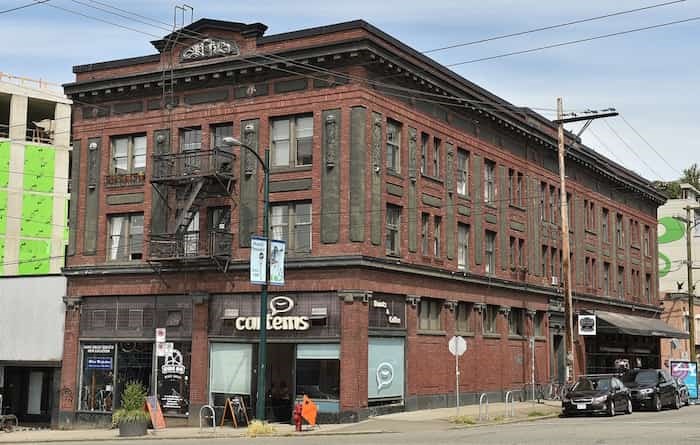 Ashnola apartments. Photo: Dan Toulgoet
Ashnola apartments. Photo: Dan Toulgoet
Alyssa Myshok, co-founder of Mount Pleasant Heritage Group, is as concerned as Heritage В鶹ҙ«ГҪУі»ӯabout the buildings, how they contribute to the neighbourhood and the areaвҖҷs future. The group helped the society put together the position paper on вҖңThe Heart of Mount Pleasant.вҖқ
Position papers for the Top 10 list outline why particular entries were chosen вҖ” the threat against them, their significance, HVSвҖҷs position and actions the public can take.
For Myshok, the heart of Mount PleasantвҖҷs вҖңhuman-scaleвҖқ buildings and long history combine to produce its character.
вҖңThereвҖҷs such a story contained in all those buildings about how Mount Pleasant came together. It was built around the streetcar so itвҖҷs almost like the first suburb built around public transit,вҖқ she said.
While the neighbourhoodвҖҷs 2010 community plan emphasizes the importance of its character, Myshok maintains nothingвҖҷs been put in place to protect it.
вҖңThe heart really is under threat. Development has been really taking off in Mount Pleasant, of course, because itвҖҷs been more accessible for developersвҖҰ It is heartbreaking that here is a really treasured part of not only Mount Pleasant, but of the city, [and] that the city hasnвҖҷt stood up to recognize [it],вҖқ she said.
вҖңNow weвҖҷre going into the Broadway corridor plan. So far, nothing that the city has put forth has really said [that] this is a critical part of what Mount Pleasant means in the community, itвҖҷs important to the city, and we need to ensure it remains as such вҖ” at scale, with a community feel, [and] retains that character.вҖқ
Aside from getting involved with the Mount Pleasant Heritage Group, both Heritage В鶹ҙ«ГҪУі»ӯand Myshok encourage residents to take part in the Broadway planning process to share what aspects they think are important and should be preserved.
вҖңShow up, attend the [Broadway Plan meetings], participate in them, and tell the city what is valuable about that area and what they feel should be kept,вҖқ Yuen said.
вҖңI want to emphasize, even though this is Heritage VancouverвҖҷs Top 10, this goes way beyond the historic buildings. It could be that the older buildings allow for more affordable rents вҖ” [itвҖҷs] anything that you value on that street. If you go to yoga, if you buy ice cream, if you sit and have a beer, if you have coffee вҖ” that local mom-and-pop business, they might get pushed out.вҖқ
REGARDS TO BROADWAY
вҖңBroadway Neighbourhoods,вҖқ earned the No. 2 position on the watch list since numerous blocks along that route between Clark and Vine are subject to the Broadway planning process.
Heritage В鶹ҙ«ГҪУі»ӯsays it supports вҖңa progressive, performance-based planning process that truly listens to residents and does not have any preconceived notions of how transit-oriented neighbourhoods should look and feel.вҖқ
Yuen said residentsвҖҷ participation in public consultation is key to ensure critical features are preserved.
вҖңThereвҖҷs a responsibility for residents to communicate properly what is important, aside from saying thereвҖҷs a specific architectural look, which is important too, but thatвҖҷs not the only thing,вҖқ heМэsaid.
вҖңOn the West Side, we hear that the neighbourhood is hollowing out, thereвҖҷs less people there and [fewer] kids going to school, so how do you bring back what makes up that neighbourhood? What is really important in terms of neighbourhood character?вҖқ
Unique elements in the Broadway neighbourhoods, according to Heritage Vancouver, include the groceries in KitsilanoвҖҷs Greektown, the вҖңpleasantвҖқ walkability of mixed-use Fairview slopes, Main StreetвҖҷs вҖңtrendyвҖқ retail and casual street life, and the вҖңdense leafy character of Mount Pleasant.вҖқ
The organization also calls attention to вҖңFirst NationsвҖҷ activity on the slopes long before 1890 when the first road was built and became a major colonial thoroughfare.вҖқ
вҖңThis rich history has left numerous unusual architectural and place-making assets, along with many intangible patterns of daily use,вҖқ states the organization, highlighting the BowMac sign, the Main Street Triangle, the collection of outdoor stores around the old MEC site,
вҖңDingbatвҖқ apartments вҖ” low-rise stucco walk-up apartments, often with parking underneath at the main level вҖ” at Granville Street, and one of VancouverвҖҷs first low-energy townhomes at Vine Street.
вҖң[They] all represent important times and movements that deserve attention and protection. These are just a handful of examples in a long list of important sites. Few of these areas, buildings, signs and stores are protected in any legal or policy sense.вҖқ
Heritage В鶹ҙ«ГҪУі»ӯinsists itвҖҷs not against change, itвҖҷs not opposed to the rapid transit line and itвҖҷs not against the Broadway planning process. Rather, it argues, itвҖҷs important to retain and enhance neighbourhood character, while allowing growth to occur.
вҖңWeвҖҷre not saying you need to keep everything, but we need to identify whatвҖҷs important to keep,вҖқ Yuen said.
For the society, вҖңa successful Broadway area plan that respects existing neighbourhoods may require careful control of land use and block by black negotiation in order to retain important concentrations of intangible patterns.вҖқ
Heritage VancouverвҖҷs overall watch list, meanwhile, varies from specific sites to particular parts of the city to how heritage, in general, can be protected.
Yuen said the societyвҖҷs overall goal with its annual list is to show the range of heritage in Vancouver, to expand the definition of heritage to beyond the buildings themselves вҖ” although they are important вҖ” to include how they support life in the city, and to underscore that thereвҖҷs a lot at risk if important sites and features of the city are lost.
The complete list:
1) The Heart of Mount Pleasant
ReadМэmore about this entry on Heritage В鶹ҙ«ГҪУі»ӯSociety's 2019 watch listМэ.
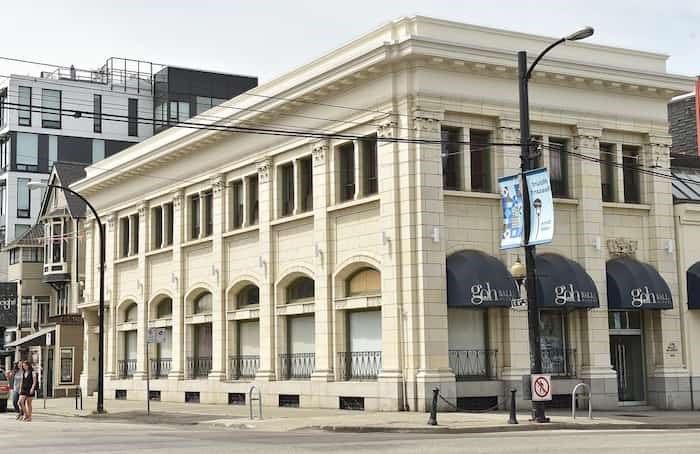 The Goh Ballet building. Photo: Dan Toulgoet
The Goh Ballet building. Photo: Dan Toulgoet
2) Broadway Neighbourhoods
ReadМэmore about this entry on Heritage В鶹ҙ«ГҪУі»ӯSociety's 2019 watch listМэ.
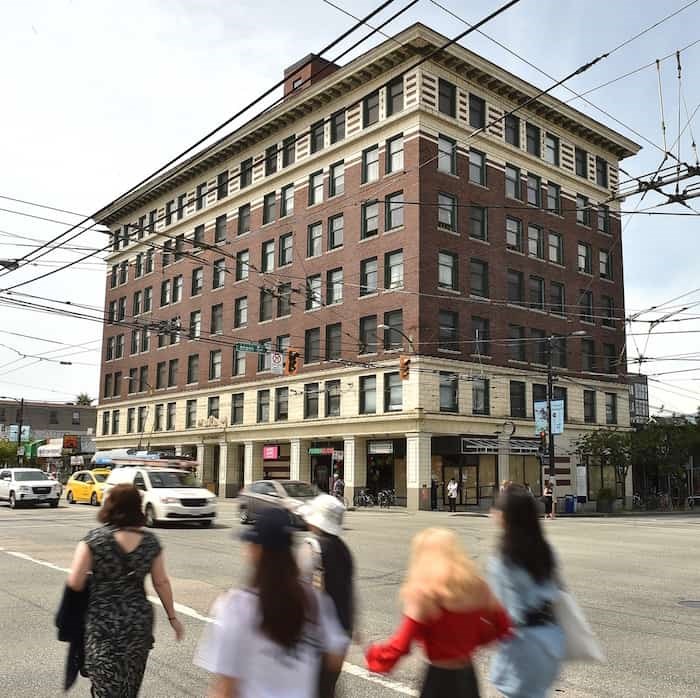 The Lee building at Main and Broadway. Photo: Dan Toulgoet
The Lee building at Main and Broadway. Photo: Dan Toulgoet
3) Maritime Museum
The В鶹ҙ«ГҪУі»ӯMaritime Museum, located in Hadden Park at 1905 Ogden Avenue, opened in 1959. The wood-shingled and glass A-frame building, which was designed by C.B.K. Van Norman & Associates, was added to the museum in 1966. ReadМэmore about its significance and why Heritage В鶹ҙ«ГҪУі»ӯSociety is concernedМэ.
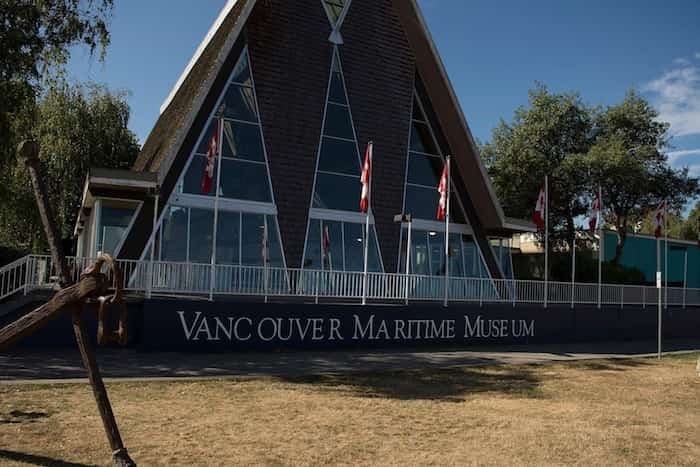
4) Dunbar Theatre
The Art Deco-style Dunbar Theatre was completed in 1935. Heritage В鶹ҙ«ГҪУі»ӯSociety says it's valued as one of the last remaining neighbourhood theatres in Vancouver. It was originally designed by Scottish-born architect David Colville. It's also associated with film producer J. Howard Boothe. Read more about its signifiance and the threat against itМэ.
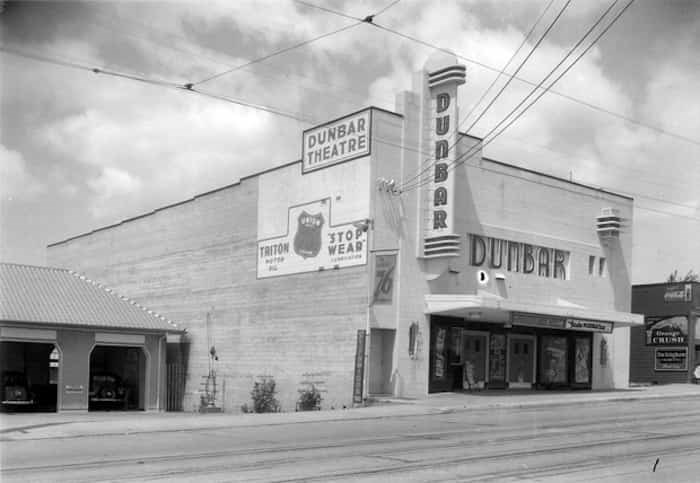 Dunbar Theatre in 1937. Photo City of В鶹ҙ«ГҪУі»ӯArchives AM1533-s2-4-:2009-005-542
Dunbar Theatre in 1937. Photo City of В鶹ҙ«ГҪУі»ӯArchives AM1533-s2-4-:2009-005-542
5) Punjabi Market
Punjabi Market, in the Sunset neighbourhood, is the first and largest South Asian market outside of South Asia. The first South Asian shop opened in 1970 and the market will mark its 50th anniversary in 2020. In the mid-2000s, businesses started closing. Heritage В鶹ҙ«ГҪУі»ӯand advocates in the community would like to see it revitalized. ReadМэmore about this entry on Heritage В鶹ҙ«ГҪУі»ӯSociety's 2019 watch listМэ.
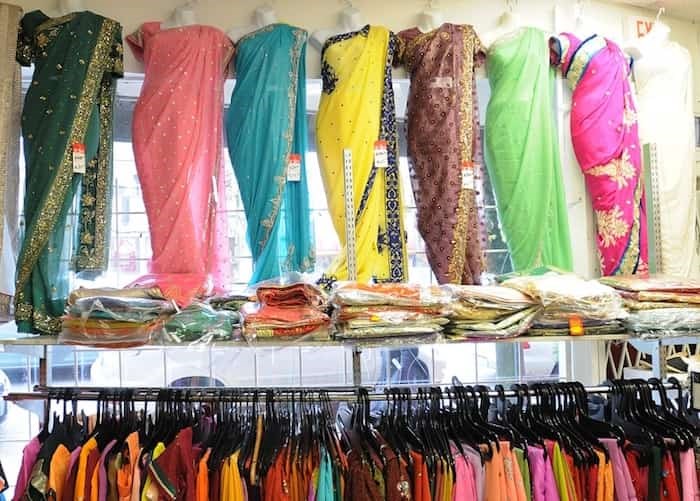 At its peak, VancouverвҖҷs Punjabi market had more than 300 shops, including 24 jewelry stores, 36 clothing and fabric stores, and 20 restaurants and grocert stores, according to Heritage В鶹ҙ«ГҪУі»ӯSociety. Photo: Dan Toulgoet
At its peak, VancouverвҖҷs Punjabi market had more than 300 shops, including 24 jewelry stores, 36 clothing and fabric stores, and 20 restaurants and grocert stores, according to Heritage В鶹ҙ«ГҪУі»ӯSociety. Photo: Dan Toulgoet
6) 525 Great Northern Way
This buidling is the largest and most significant structure that remains from the original Finning International manufacturing complex, according to Heritage В鶹ҙ«ГҪУі»ӯSociety. The organization considers it a significant example of an historic industrial building. Readmore about the threat against the structure and the society's position on its futureМэ.
Read a February 2019МэCourierМэstory about False Creek Flats gallery spaces that will be demolished for the Broadway subway extensionМэ.
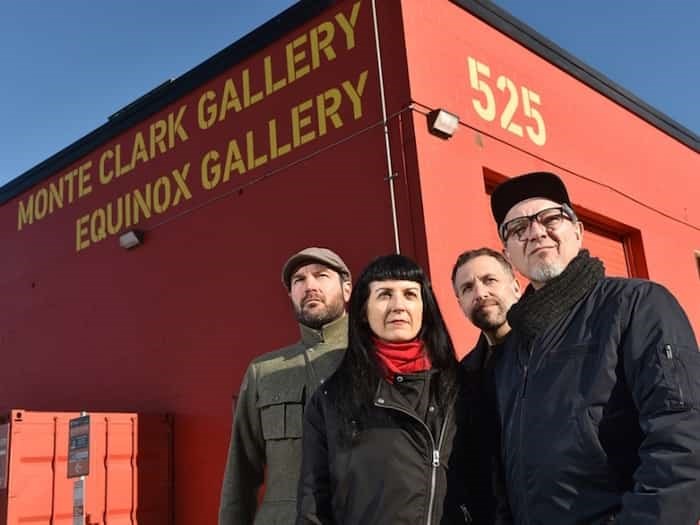 525 Great Northern Way. Photo Dan Toulgoet
525 Great Northern Way. Photo Dan Toulgoet
7) Fairmont Building
This 1912 building, which is listed as an "A" on the В鶹ҙ«ГҪУі»ӯHeritage Register, is located on the Heather Lands, which is poised to be redeveloped by the Musqueam Squamish and Tsleil-Waututh Nations and the Canada Lands Corporation. As a measure of reconciliation, the building won't be remaining on the property due to its associations with colonialism. Attempts are being made to find a new location for it. If one isn't found, it will be demolished. Read more about this entry on Heritage В鶹ҙ«ГҪУі»ӯSociety's 2019 watch listМэ.
TheМэCourierМэalso wrote about the Fairmont Academy in a March 2018 story, which readers can findМэ. A story about the overall plans for the Heather Lands can be foundМэ.
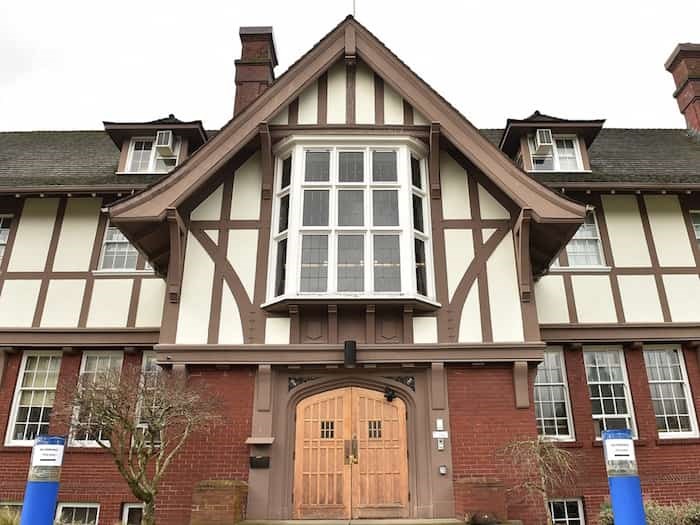 The Fairmont Academy. Photo Dan Toulgoet
The Fairmont Academy. Photo Dan Toulgoet
8) Legacy of Expo 86
Except for some buildings and the SkyTrain Station, there's is physically not much left in В鶹ҙ«ГҪУі»ӯfrom Expo 86, according to Heritage В鶹ҙ«ГҪУі»ӯSociety. "Given that Expo 86 ushered in Vancouver's era as a cosmopolitan city, efforts should be made to leave within public memory, meaningful reminders of Vancouver's over-the-top coming-out party," the organziation states. Read more about this entry on the 2019 watch listМэ.
 BCisAwesome.com
BCisAwesome.com
9) Japantown
The first generation of Japanese immigrants arrived in the early 1880s and settled along Powell Street. Pauera Gai вҖ” the Japanese translation of Powell Street вҖ” became the business centre for the Japanese Canadian community, and the commercial and social core of a larger residential area, according to Heritage В鶹ҙ«ГҪУі»ӯSociety. "Despite a growing awareness of the importance of Japantown, there is little recognition of its surviving heritage buildings, and no specific heritage area planning protection," the society says. ReadМэmore about what the organization thinks needs to be done to address this concernМэ.
In November of 2018, theМэCourierМэwrote about the plans for the Ming Sun building at 437 Powell St.МэМэandМэМэIt has associations with the Japanese and Chinese communities.
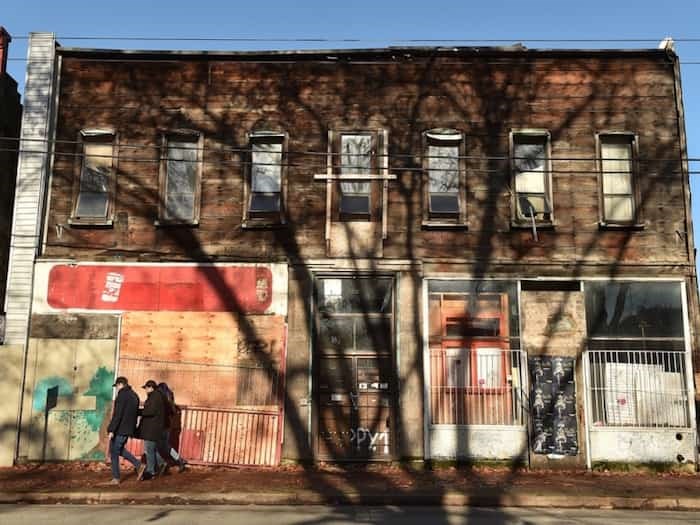 The building at 437 Powell St., which has associations with the Japanese and Chinese communities. Photo: Dan Toulgoet
The building at 437 Powell St., which has associations with the Japanese and Chinese communities. Photo: Dan Toulgoet
10) Protecting VancouverвҖҷs Heritage
Although the city has taken some steps towards heritage conservation, Heritage В鶹ҙ«ГҪУі»ӯSociety argues the threat against heritage remains significant. ReadМэmore about the organization's concerns and what measures it thinks should be takenМэ.
In 2018, theМэCourierМэpublished several stories about a property at 3737 Angus St., which suffered damage from a fire. After the blaze, the roof wasn't covered to protect it from the elements. Find one of those articlesМэ
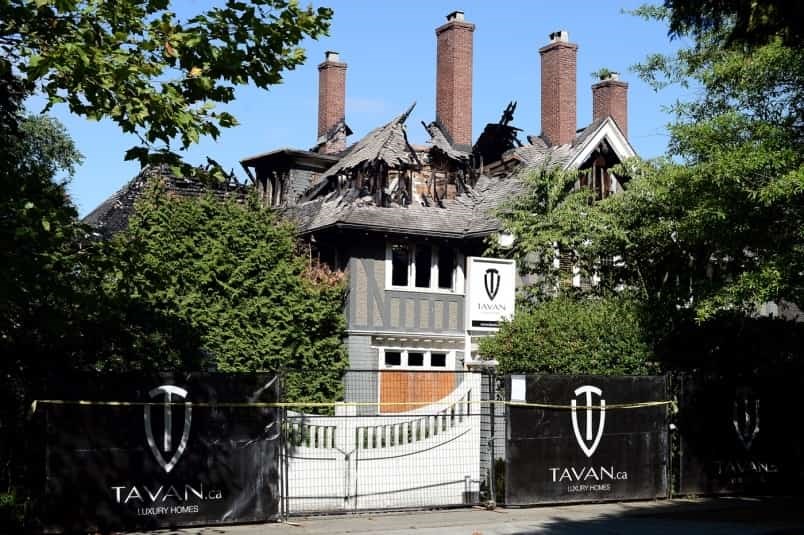 3737 Angus Dr. in August of 2018. Photo Dan Toulgoet
3737 Angus Dr. in August of 2018. Photo Dan Toulgoet


